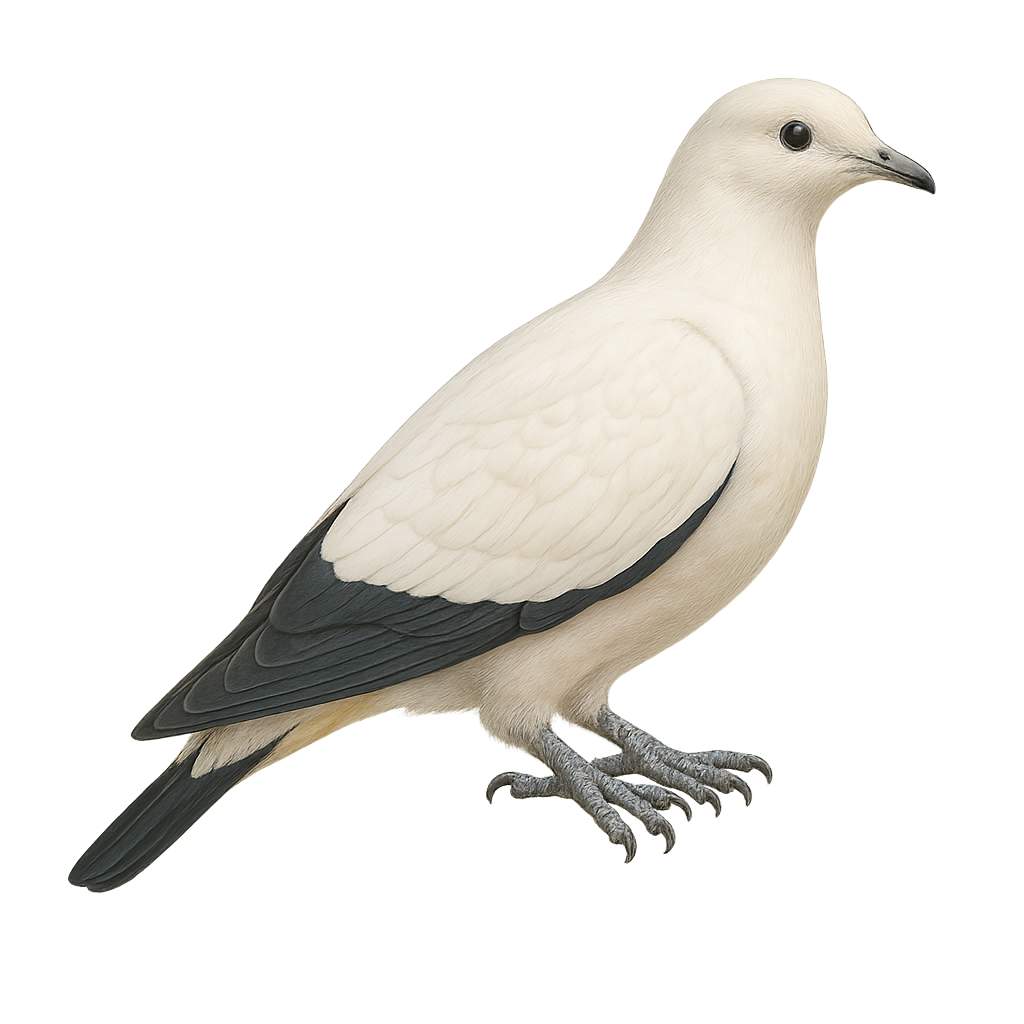Your wildlife photography guide.
Explore the pied imperial pigeon in detail, study its behavior, prepare your shots.
Where to observe and photograph the pied imperial pigeon in the wild
Learn where and when to spot the pied imperial pigeon in the wild, how to identify the species based on distinctive features, and what natural environments it inhabits. The WildlifePhotographer app offers tailored photography tips that reflect the pied imperial pigeon’s behavior, helping you capture better wildlife images. Explore the full species profile for key information including description, habitat, active periods, and approach techniques.
Pied Imperial Pigeon
Scientific name: Ducula bicolor

IUCN Status: Least Concern
Family: COLUMBIDAE
Group: Birds
Sensitivity to human approach: Suspicious
Minimum approach distance: 10 m
Courtship display: February to March
Incubation: 25-27 jours
Hatchings: February to April
Habitat:
Tropical forests, mangroves, urban areas
Activity period :
Primarily active during the day, with peak activity in the morning and late afternoon.
Identification and description:
The Pied Imperial Pigeon, Ducula bicolor, is a large pigeon species known for its striking white plumage contrasted by black wings and tail. It is primarily found in the tropical forests and mangroves of Southeast Asia, including Indonesia, Malaysia, and the Philippines. This pigeon is an excellent flyer, capable of covering long distances to feed on fruits, its main food source. It plays a crucial role in seed dispersal, aiding forest regeneration. Although generally solitary, it can be seen in small groups during the breeding season. Its ability to adapt to various habitats, including urban areas, demonstrates its resilience. However, deforestation and hunting pose threats to some local populations.
Recommended lens:
400 mm – adjust based on distance, desired framing (portrait or habitat), and approach conditions.
Photography tips:
To photograph the Pied Imperial Pigeon, focus on early morning hours when the light is soft and activity is high. Use a telephoto lens of at least 400mm to capture precise details without disturbing the bird. Be patient and discreet, as this species can be suspicious. Look for natural perches where pigeons rest or feed. Mangroves and tropical forests offer great opportunities for flight shots. Remember to check the weather, as wet conditions can affect your equipment.
The WildlifePhotographer App is coming soon!
Be the first to explore the best nature spots, track rutting seasons, log your observations, and observe more wildlife.
Already 1 430 wildlife lovers subscribed worldwide

